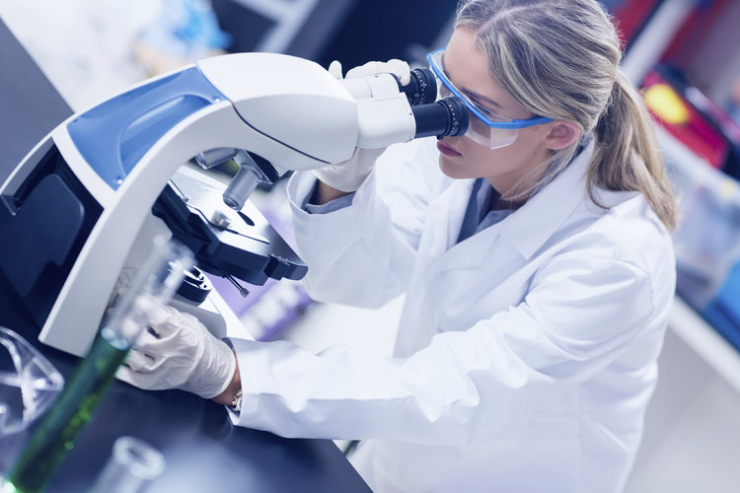Harvard Apparatus Regenerative Technology (NASDAQ:HART) plans to file an IND later this year for a pivotal trial of the world’s first regenerated trachea transplant in patients facing life-threatening trachea trauma and cancer.
“Our InBreathAirway Transplant System has been successful in six human compassionate cases and because we have great data from these cases, we believe our clinical risk could be greatly reduced,” CEO, David Green, says in an interview with BioTuesdays.com.
“That makes us pretty unique for a biotech company, knowing the technology works in humans before we go into clinical studies,” he adds.
Mr. Green explains that the InBreath system consists of a rotating bioreactor, which seeds a patient’s bone marrow cells on a scaffold for two days. The synthetic porous polymer scaffold is the same polymer as Dacron vascular grafts, rendering them very safe, he points out. There are an issued patent on the bioreactor technology and patents pending on the scaffold design.
“The advantage of the scaffold is that there is no wait for a donor organ,” he adds. “The old trachea is replaced with a regenerated trachea in the operating room, and there is no rejection because we use a patient’s own cells.”
Mr. Green describes the six cases performed by Harvard as “the sickest of the sick”. He claims that transplant was these patients’ last resort. “Many of these patients were so sick they would never be admitted to a clinical trial.”
Three of the five adult compassionate use cases died of causes unrelated to a failure of the InBreath scaffold—a road accident, acute liver failure due alcohol consumption and pneumonia. The adults who died had survived an average of 21 months. According to Mr. Green, their survival without transplant surgery would likely have been only a few months.
The InBreath device has received orphan designation from the FDA. Harvard expects to receive the same designation in the EU during the current quarter, which will result in seven-to-10 years of market exclusivity.
Mark Landy, an analyst with Summer Street Research Partners, contends that unlike traditional transplants, the InBreath trachea is available on demand, its size and shape are customized to fit each patient’s requirements, and it does not require anti-rejection medicines.
“This makes it a very desirable option for patients, and with time, it may eventually be chosen over an available human trachea as the go-to option for patients needing a new trachea,” he suggests.
Harvard Apparatus was spun out from Harvard Bioscience (NASDAQ:HBIO) in November 2013. Mr. Green, CEO and a founder of Harvard Bioscience 17 years ago, and Tom McNaughton, CFO, both left the parent company to run Harvard Apparatus.
Mr. Green says more than 7,700 new patients annually in the U.S. and EU would be eligible for trachea transplant. At an estimated cost of $100,000 per procedure, this represents a $770-million annual market potential.
Trachea trauma represents 7,200 annual patients who are at an extreme likelihood of dying from trachea stenosis or complications from tracheostomy. Mr. Green says the average hospital stay for these patients is 22 days, at an average cost of $248,000. Trachea cancer affects some 500 patients a year.
In addition to patents, orphan exclusivity and first mover advantage, Mr. Green contends that the InBreath system should have a favorable reimbursement profile with insurers because it can save lives and reduce medical costs.
A regenerated and transplanted trachea costing between $100,000 and $200,000 has already been favorably reviewed with a major health insurer in Massachusetts, according to Mr. Green.
In comparison, he points out that life threatening trauma patients typically cost about $250,000 to treat on a single admission to hospital and that cancer therapies are typically priced at $50,000 to $100,000 per patient for three-to-four months of survival benefit.
“We have an average of 21 months of survival benefit with our patients who have died,” he adds.
Mr. Green says the company’s proposed pivotal trial design would enroll 30 patients, of which the first five would be looked at for safety. Those five patients would then roll over into the efficacy component of the trial to be conducted at four sites in the U.S. and two in the EU, including Britain.
The primary endpoint of the single arm, open label trial would be lung function. The trail would compare the forced expiratory volume in the first second (FEV1) before surgery and at 90 days after surgery. If the FDA approves Harvard’s IND this year, the company could have data in mid-2017 and possibly sooner in the EU.
Mr. Green recalls that the FEV1 of one of the company’s compassionate use cases rose to 100% after 90 days from 55% before surgery. The FDA approves drug therapies with an FEV1 improvement of 20%.
The company and its collaborators also have had preclinical success with regenerating and transplanting a rat esophagus and a rat lung using its bioreactor and autologous cell scaffold. The esophagus and lung studies were published in Nature Communications in 2014 and Nature Medicine in 2010, respectively.
Earlier this month, Harvard and Mayo Clinic signed a joint development agreement to develop and improve regenerative medicine treatments for severe diseases. The two groups have collaborated for the past two years in Mayo’s program to develop a synthetic human heart valve. The relationship has grown between them and the new collaboration is designed to foster work on additional organs such as the airway and the esophagus.
“These are longer-term projects because our business in the short term will be based on trachea transplant,” Mr. Green says.







